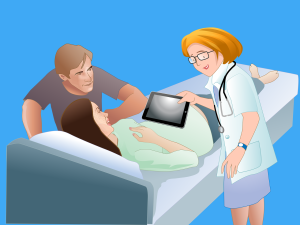
A relatively new field of medicine, hospital medicine is a specialty focused on hospitalized patients and their care. Practitioners, referred to as hospitalists, can include physicians, physician assistants, and nurse practitioners trained in internal medicine, who are involved in clinical care, research, and teaching.
Typical responsibilities for hospitalists include coordinating the patient’s admission process, discharge, and follow-up appointments, providing care during the patient’s hospital stay, managing consultations and specialists, and ordering tests. Additionally, hospitalists also work to improve the overall performance of the hospital by employing process improvement tools and techniques, collaborating with all health care personnel involved in the care of the patient, and by using hospital resources efficiently.
About the Author:

A native of India, Dr. Abhishek Kapila, completed his medical residency at the East Tennessee State University James H. Quillen College of Medicine. Licensed to practice medicine in Kentucky and Virginia, Dr. Abhishek Kapila currently serves as a hospitalist at the Frankfort Regional Medical Center Hospital, in Frankfort, Kentucky.



